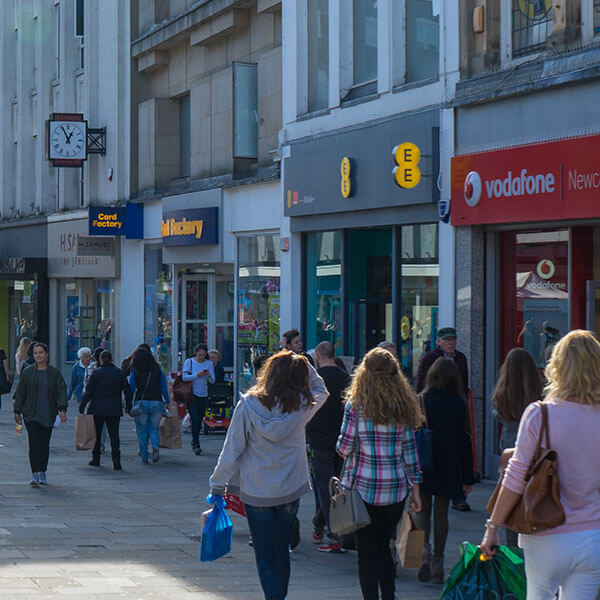
In defence of the high street
A REPORT ON the role of commercial space, published this week by the think tank Centre for Cities, concluded that struggling city centres (defined as city centres with small shares of highly productive firms and jobs) should reduce their reliance on retail, repurpose surplus shops, and focus on creating an environment that better accommodates firms in sectors like ICT, legal services and insurance. The implication is clear: retail is dying, so bricks and mortar shops should go and more profitable businesses should replace them.
Like so much of the commentary surrounding the so-called retail apocalypse, much is left out. Retail isn’t dead or dying but changing, and the Internet is of course the driving force for these changes. The rise of e-commerce, rapid delivery services and the prevalence of price comparison and review sites are forcing more traditional business to adapt, and there are plenty of companies that are doing so and thriving. I’ve written before about the growth of Tesco and other supermarkets, the success of JD Sports and Primark in spite of adverse currency movements and the entry into the market of international chains including Scribbler, Hema, Tiger and Forever21. Some retailers may be struggling, but that does not herald their impending collapse. If the retailer takes the right decisions, that struggle heralds a wholesale transition into something new, something modern, and something better.
But the Centre for Cities fails to appreciate the importance of retail beyond economics. Since the early days of the high street in the late 19th century, the high street has been one of the pillars of what we call “community”. If we lose our interest in the high street, or reduce it to a long, soulless block of offices, it follows that we lose something that is fundamental to society. It’s no secret that in the West at least, we are becoming increasingly isolated, and if we only shop from behind a screen, we reduce the amount of time we might spend socialising while we shop, and even simply interacting with those who share our villages, our towns, and our cities.
Research has shown that a diverse retail offering can contribute to the social well-being of local communities. It is a driver for tourism because of the way it strengthens the appeal of our towns and cities. Retail aids urban regeneration and the vitality of British town centres, and has done for decades. A large number of academics accept that the vitality of town centres correlates with the social and economy well-being of those who live nearby.
This is not a call to play the Luddite and reflexively resist progress in all its forms. Creative destruction goes hand in hand with a healthy, growing economy. Instead, it is a reminder to appreciate that change and failure are not the same and that the role of shops on our high streets goes far beyond money-making to what is arguably more important: wider well-being and community. Equally, it’s a warning to high-street retailers: accept change, adapt quickly and take advantage of tech. Transform your tired bricks-and-mortar stores into places that are experience led and fun for customers. In doing so this, we can have the best of both worlds.

